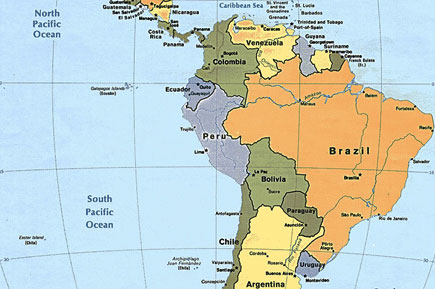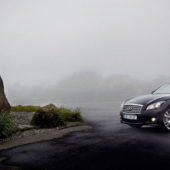The world’s leading nation branding expert Simon Anholt is currently working with the Chilean government and agencies in developing Chile’s nation branding project. Chile’s image is handicapped by negative stereotypes which are also shared by the whole rest of the Latin American countries. Anholt has spoken about the need these countries have of a proper nation branding initiatives in this article by Andres Oppenheimer:
Here’s some good news for Latin America: A new worldwide survey reveals that Brazil, Argentina and Mexico have a better image abroad than India, China, South Africa and most Central European countries.
The bad news for Latin America, however, is that while some of its countries have a relatively good image abroad, their products don’t. The 2008 Anholt-GFK Roper Nation Brand Index, a poll of 20,000 people around the world that measures the image of 50 nations, shows that Latin American products are still viewed with apprehension in the rest of the world.
”Latin American countries are considered to be very picturesque, warm, colorful, vibrant, but not competent,” said Simon Anholt, the London-based author of the report, in a telephone interview. “This is their main problem.”
The report’s overall ranking of countries’ perception abroad is led by 20 industrialized countries. Germany, France and Britain occupy the first three spots, and the United States ranks seventh.
Further down in the list, Brazil ranks 21st, Argentina 24th, Mexico 26th, India 27th, China 28th, Poland 30th, Chile 38th, Peru 40th, Ecuador and Cuba 46th, and Iran 50th.
But when asked specifically how they perceive products of countries around the world, the survey’s respondents placed Latin American countries farther down in their list.
The study’s ranking of countries’ exports image is led by Japan, the United States and Germany, in that order, while South Korea ranks 18th, New Zealand 20th, China 21st, India 26th, Brazil 27th, Argentina 31st, Mexico 35th, Chile 40th, Cuba 46th and Ecuador 48th.
Anholt told me that the survey on exports is almost more important than the one on countries’ overall image, because it has a direct economic impact on countries’ economies.
‘If you had a choice between two completely unknown brands of DVD players, and one said `Made in Japan’ and the other ‘Made in Guatemala,’ you’d buy the Japanese one,” Anholt said. “Hundreds of millions of people around the world make hundreds of millions of decisions like that every day.”
Asked what countries should do to improve their brand names, Anholt recommended that they spend less money on expensive tourism or export promotion campaigns, and instead focus more of their energies in coming up with national country brand projects.
”They must create a body which cuts right across government, business and civil society, so that all of these people get together and say, what is our image today, what do we want to achieve, and what are we going to do collectively and individually to improve our image,” he said.
The key to generating a good country brand for a nation’s exports is innovation, he said. He cited the example of New Zealand, a country that was virtually unknown in the rest of the world two decades ago. New Zealand adopted a common strategy to promote its tourism, and its kiwi, lamb, and butter exports, under one single theme: “One-hundred percent pure.”
”That was more than a slogan — it really was true about the country,” Anholt says. “It sent the message that it’s a country that is uncontaminated. This was very attractive for tourism, but also for their food products.”





One comment
Comments are closed.